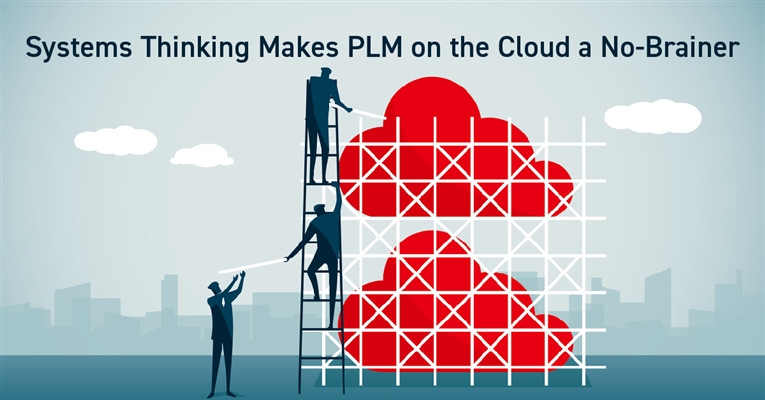One of the goals of digital transformation is to enable traceability in context between the many expert silos and the final design results—a digital thread that connects people, processes, and data. That does not mean eliminating domain experts or their tools but rather providing the ability for non-experts to leverage their work via a traceable and repeatable process.
Simulation is a perfect example with its need for model extraction, repeated execution in context, verification of results against requirements, and the need to compare results across design revisions—across separate OEM business units, partners, and suppliers. Other silos include requirements management, systems engineering, product platform variability, and others.
There is a key aspect of these silos that directly affects (or should affect!) the scope of digital transformation, because it involves different sets of data and processes, and therefore impacts OEMs’ digital thread scope:
- Are they targeting a system-centric view before design details become available?
- Or are they targeting design details in a specific implementation domain, a BOM-centric view?
The engineering V model provides very good visualization of that. It shows system-centric views of a product starting on the upper left of the V model and progressing down to the bottom. These views represent design intent in a tool-agnostic way. BOM-centric views of a product become established at the bottom of the V model and progress to the upper right. These views represent design data. Enabling traceability between system-centric views and BOM-centric across the entire engineering V model and across expertise silos is where systems thinking and digital transformation become inseparable.

There is a natural tendency to assume that the system-centric views are established with MBSE (Model-Based Systems Engineering) tools used by systems engineers and communicated to the rest of the enterprise in a form of diagrams. That isn’t always the case, however, since not every OEM needs that level of sophistication or can absorb the cost of embracing it. Many OEMs rely on system-centric views explicitly authored as requirement structures, or functional breakdowns, or product platform/family definitions, or structured organization of the engineering in form of reusable modules, or similar. Maybe in time every OEM will use sophisticated MBSE tools to generate whatever system-centric views they need but that is not the case today.
The key point to the digital transformation strategy is to recognize which system-centric views are key, where they come from, and which expertise silos are involved to defining them during the design space exploration phase. This is where things can go wrong without a systems thinking approach because lack of traceability to design intent prevents individual implementation domains from understanding why things need to be implemented in a specific way.
Once system-centric views are defined and communicated to the rest of the engineering organization, their intent must be allocated to the individual engineering domains for implementation. Sometimes it is a straightforward assignment of a function per domain (ex: software or mechanical) but many times it requires a process of optimization across individual domains. Signal latency is a good example:
While a system-centric view may communicate a maximum overall latency budget of some sort of a control scenario, the design implementation may have to distribute that between electronic devices (sensor reaction, pin I/O buffer delays), electronics (clock rates, signal integrity), software (data and signal processing algorithms), and mechanics (movement of a physical actuator). That distribution is never straightforward and always involves interactive optimization between the different domains to avoid overdesign or unnecessary implementation costs. The key point to a digital transformation strategy driven by systems thinking is to recognize which expertise silos are involved during the design optimization phase and how to reuse this expertise during the BOM-centric verification of the designs.
And that’s a lot of data that needs to be connected via a digital thread. Fortunately, modern PLM platforms are architected to span the entire engineering V model, to correlate the system-centric and BOM-centric views in the context of specific revisions and configurations, and to reuse democratized and “packaged” tasks traditionally dedicated to expertise silos in a form of specific workflows, configurations, and result interpretation methodologies by non-experts.
This need is not lost on the industry. Here is a quote from the July 2022 IDC report titled “Global PLM Priorities by Company Size”* where more than 800 PLM decision makers shares their thoughts on current business concerns, future priorities, and PLM implementation goals:
“Improving collaboration is becoming essential to product development, especially when there are development partners and an extended supply chain. Continuously evaluating product and life-cycle analytics is critical to improving product designs and optimizing performance. Therefore, cloud/SaaS PLM tools that can access data silos and leverage high-performance computing will be a growing part of the product development infrastructure.”
Aras Enterprise SaaS, the Generation 2 SaaS PLM leader, enables systems thinking by extending its core PLM services to the left side of the engineering V model. This includes flexibility to define and manage and generate various system-centric views from the underlying system models, integrating them with the tool-agnostic digital thread that already includes BOMs, and managing their lifecycle using the same proven PLM services traditionally used for managing BOMs. While cloud-based PLM platforms offer many benefits, from the systems thinking perspective, Aras Enterprise SaaS provides the ultimate collaboration environment for cross-domain optimization. This is because cloud-based functionality can be accessed under permission controls by anybody from anywhere across the OEM, partners, and suppliers. This gives the globally dispersed teams ubiquitous access to the system-centric views of design intent in context and when needed, which can improve data quality and process speed.
In conclusion, systems thinking as part of digital transformation enables OEMs to create lasting competitive advantages in the marketplace by managing and leveraging exploding product complexities to their advantage. OEMs can benefit from systems thinking as part of their digital transformation journey by taking advantage of Aras Innovator or Aras Enterprise SaaS.
Learn more about Aras Enterprise SaaS and the benefits of systems thinking.
*Source: doc # US49122322 , July 2022

